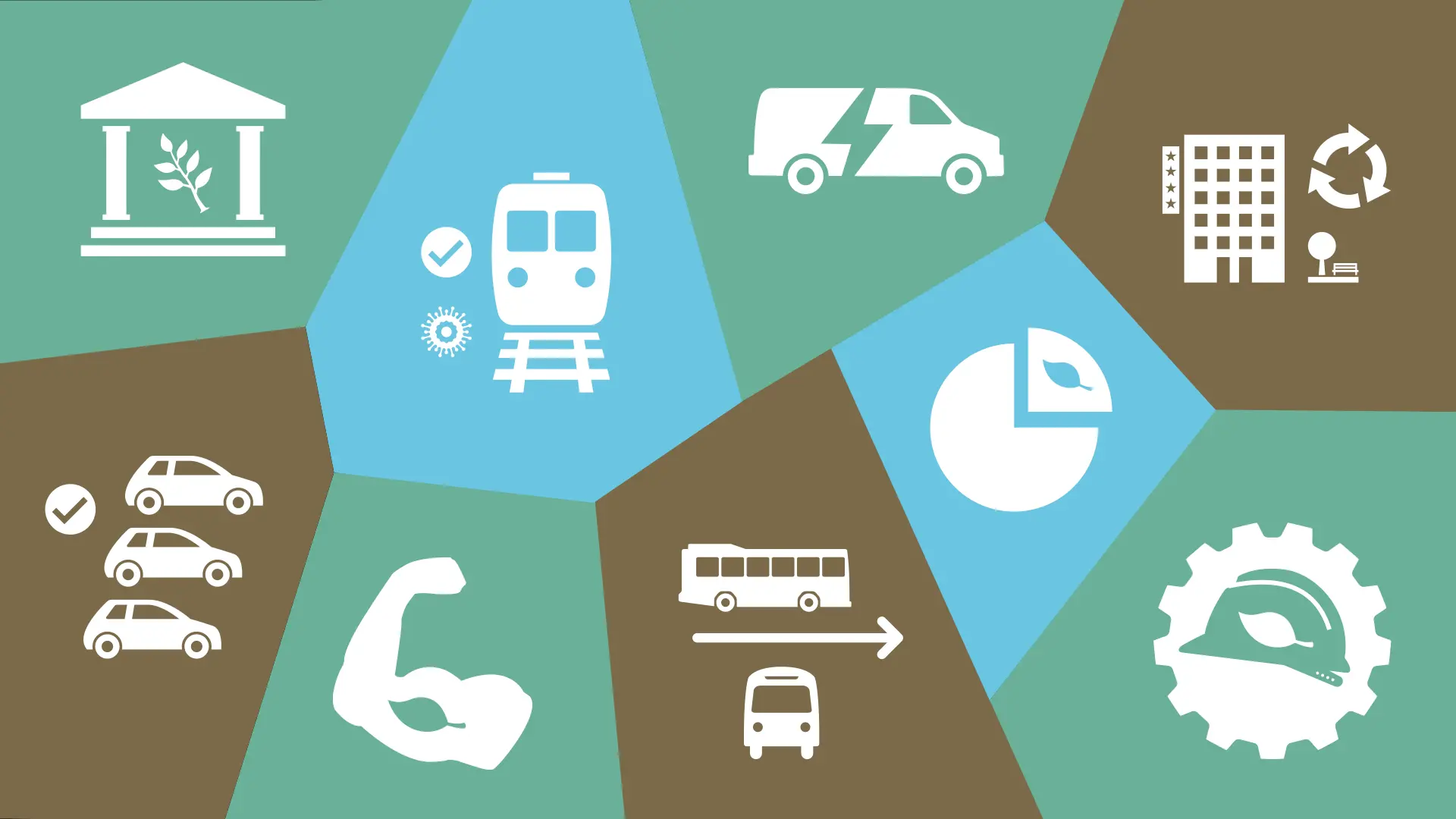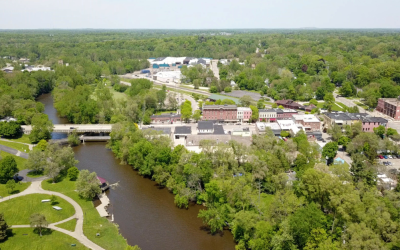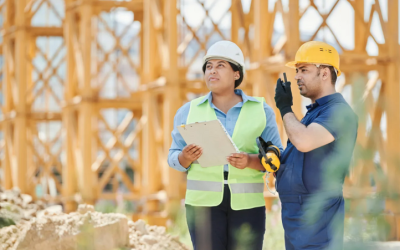This article originally appeared on the Bloomberg Cities Network Hub.
Recent reports from a key United Nations panel on climate change make three things vividly clear: The crisis is escalating at an alarming pace, the window of opportunity to avoid its worst impacts is closing quickly, and the need for bold solutions is more urgent than ever.
City leaders are stepping up to the challenge. And they’re doing so in increasingly impactful ways—using innovation tools like data, resident engagement, and collaboration to create solutions that are already making a measurable difference in their hometowns and are designed in ways that can be replicated in cities around the world.
This work is most evident across 25 cities participating in Bloomberg Philanthropies’ American Cities Climate Challenge. Launched in 2018 in partnership with the Natural Resources Defense Council, Delivery Associates, RMI, Greenlink Analytics, and others, the program provides resources and supports for cities to take holistic approaches focused on clean buildings and public transportation.
These cities have passed 61 major building, energy, and transportation policies and launched 79 new climate programs and initiatives, putting them on track to collectively reduce their emissions by 32 percent by 2025. That actually exceeds targets set by world leaders in the Paris Agreement.
“Bloomberg Philanthropies created the American Cities Climate Challenge to partner with cities to deliver bold and effective local climate strategies,” says Antha Williams, who leads the Environment program at Bloomberg Philanthropies. “Together, the 25 cities have proven that it’s possible to achieve significant reductions in emissions while strengthening local economies and improving the health and livelihood of their communities.”
In honor of Earth Day this week, Bloomberg Cities takes a closer look at 9 solutions emerging from the American Cities Climate Challenge that can inspire city leaders everywhere.
Boston | Columbus | Denver | Honolulu | Indianapolis | Pittsburgh | San Diego | San Jose | St. Paul
Boston: Increasing transit use and post-COVID recovery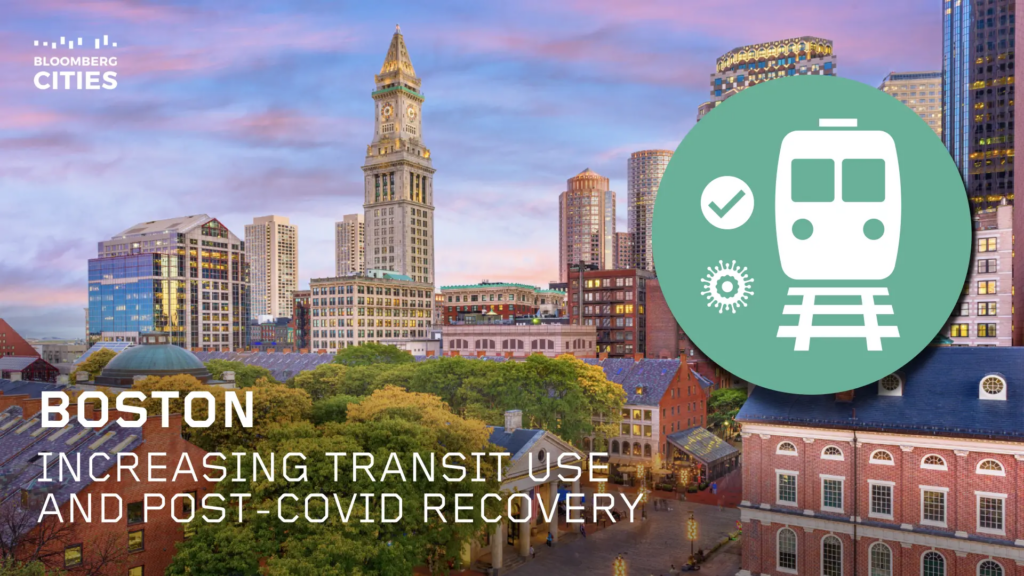
When COVID shut cities down practically overnight, it also threw a curve ball at Boston’s plan to cut single-occupancy vehicle trips in half by 2030. To encourage people to return to public transportation, the city launched a pilot program offering pre-loaded transit and bike passes to 1,000 residents living in five of the neighborhoods hardest hit by the pandemic. The initiative didn’t just get people riding again—participants tripled their use of the bus and subways during the pilot—it also helped residents reestablish their financial footing. Mayor Michelle Wu is now building on that pilot program’s success, using COVID-relief funds to expand fare-free bus service. When it comes to launching a new climate program, Vineet Gupta, director of policy and planning for the Boston Transportation Department, says that local leaders should aim for quick wins “to show progress and build trust that the plan will not sit on a shelf.”
Columbus: Promoting environmental-justice goals 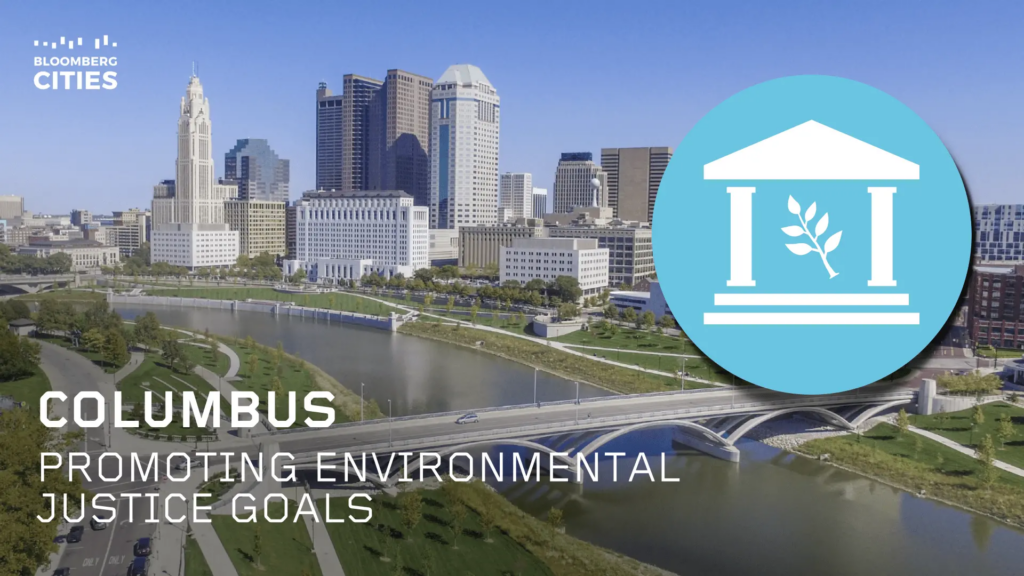
As Columbus, Ohio, works to reduce emissions by 45 percent by 2030, it’s doing so in ways that also help the city improve residents’ lives in other ways. “Addressing climate change is about more than reducing carbon emissions,” Mayor Andrew Ginther explained earlier this month. “It is also about expanding opportunity, promoting upward mobility, and elevating quality of life.” One of the ways the city is doing just that is by making job creation a core component of Clean Energy Columbus, a clean-energy aggregation program that will create a diverse workforce pipeline—and up to 4,000 jobs statewide—to construct and maintain wind- and solar-energy sources to power local homes and small businesses. As part of that effort, the city this month launched a program called Empowered!, a workforce-training effort that focuses on people of color, women, and youth from low-income backgrounds. Participants will work as paid “energy advocates”—helping their neighbors navigate and better understand energy efficiency—as they gain on-the-job skills needed to be competitive candidates for full-time employment in the burgeoning clean-energy sector. The city’s Chief Sustainability Officer, Bryan Clark, says having a well-defined vision is key to getting residents on board for bold climate action. “A clear vision with a ‘North Star Goal’ will help align and activate partners, stakeholders, and community members across all sectors to help achieve your climate and environmental justice goals,” he says.
Denver: Developing a green workforce 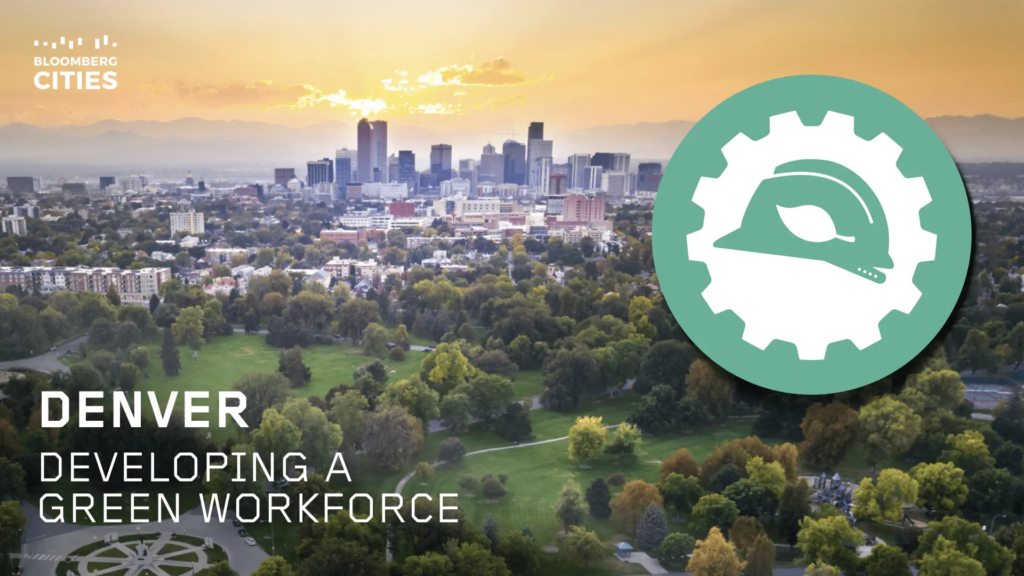
A greener future requires greener jobs. And in Denver, the city’s climate and economic development offices are working together to ensure that their residents are first in line—and well-trained—for careers in this growing industry. Last fall, the city awarded $2.1 million in contracts to six organizations that are now providing outreach, education, up-skilling, re-skilling, apprenticeships and on-the-job training for clean-energy jobs. This year, the program, which is funded by the taxpayer-supported Climate Protection Fund, will target its funding toward women- and minority-owned businesses. That’s key to moving the needle on climate action, according to Denver Climate Team Manager Elizabeth Babcock. “Without buy-in from a diverse group of backgrounds, experiences and expertise, cities will likely face hurdles to crafting policy that works to advance climate goals and meets the needs of the community,” she says.
Honolulu: Catalyzing rapid bus lane implementation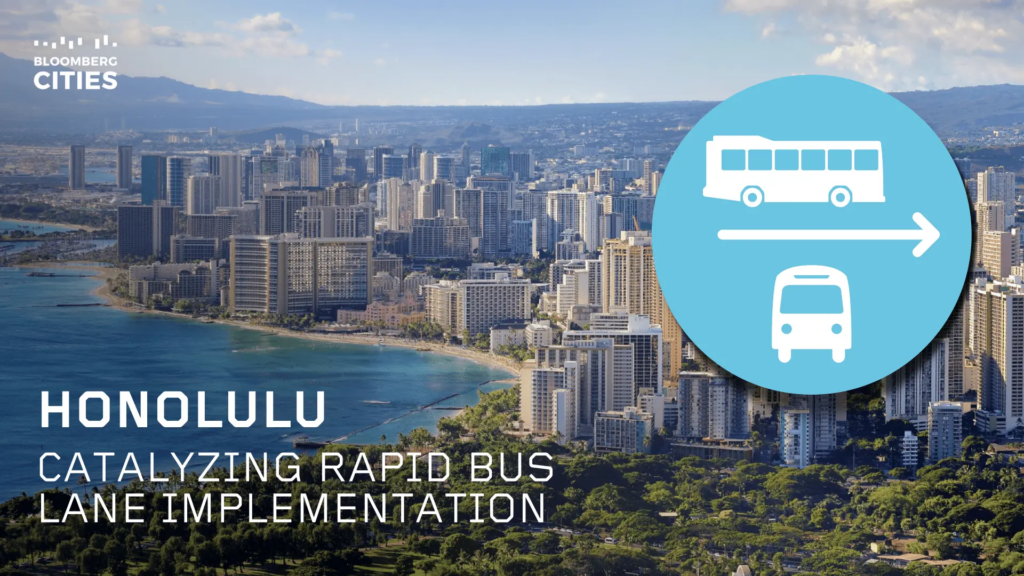
Public transportation is already popular in Honolulu; half of the people on the city’s downtown streets at rush hour are riding the bus. But those buses have, historically, always been stuck in traffic jams that are among the worst in the country. Until now. The buses in Honolulu are moving again, thanks to a new bus lane that stretches the length of the city’s arterial King Street. The dedicated lane, which is the first created in the city in more than three decades, is both speeding up commutes for current riders and promoting others to use public transportation. The infrastructure isn’t the only innovation, though. Nicola Hedge, deputy director of the city’s Office of Climate Change, Sustainability, and Resiliency, says it was collaboration between the staffs of four city departments that made the biggest difference, enabling the city to cut a year out of the process and setting the stage for clean-mobility projects to come. “This precedent is now being used as a model to speed up delivery of upcoming transit-priority, bicycle, and pedestrian projects,” she says. “It’s accelerating the development of clean, affordable transportation options for more Honolulu residents.”
Indianapolis: Building capacity to deliver climate action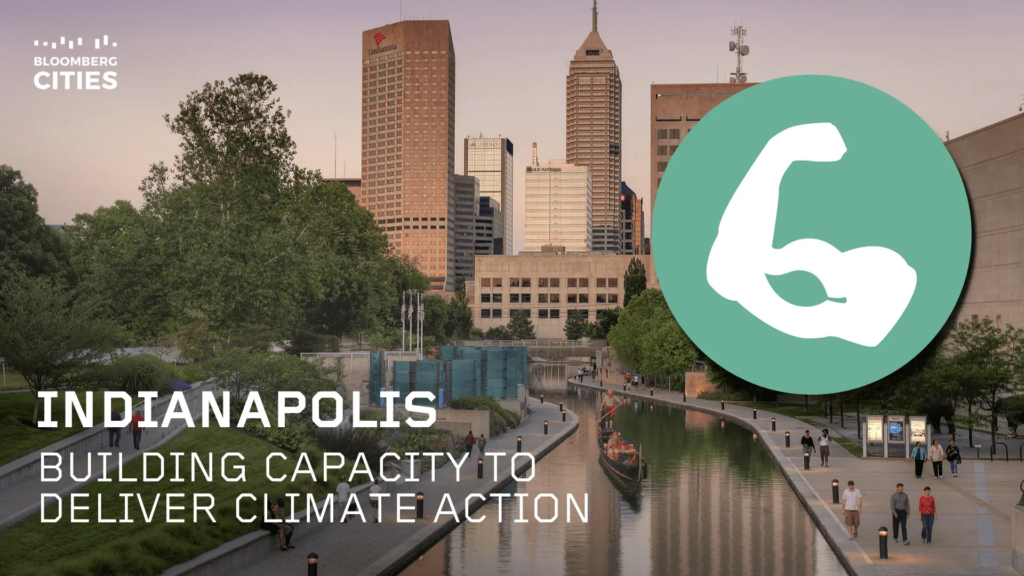
A lot of cities have climate-action plans but don’t have systems in place to deliver on big promises. That’s what makes the data-driven delivery plan surrounding Indianapolis’ climate-action plan so important. Each of the plan’s 59 action items identifies the data that will help the city ensure it is on track for achieving its goals. That data not only funnels up to the mayor’s office but it’s also available online so that residents can hold the city accountable. “Cities currently in the stakeholder-engagement phase of developing a climate-action plan should think about how to best communicate progress to constituents over the life of the plan,” says Morgan Mickelson, director of the Indianapolis Office of Sustainability. “Determining exact metric measurements and documenting this methodology early will be key to your success.”
Pittsburgh: Rethinking the budget to free up funds for climate action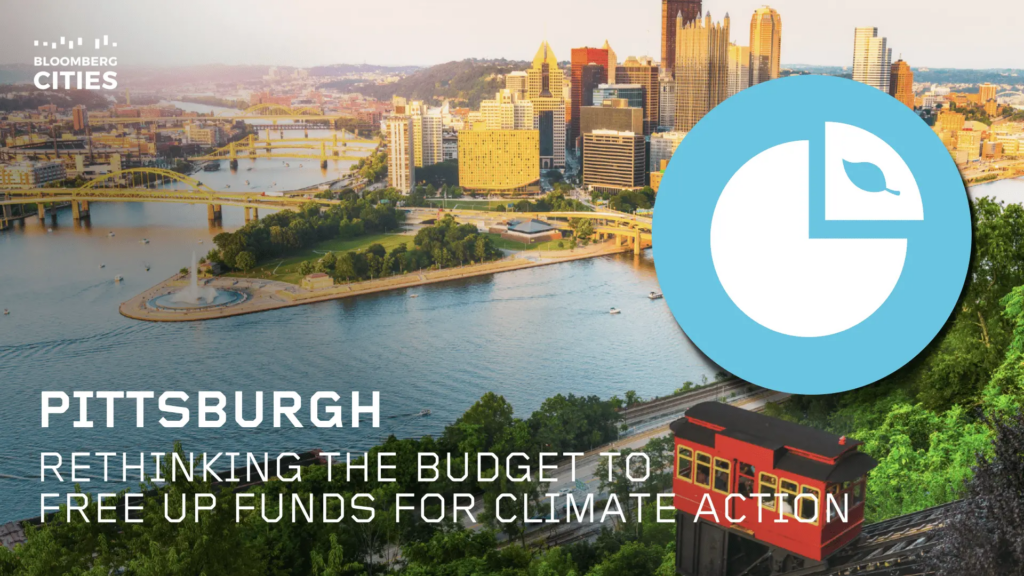
Budgets are always tight at the local level. But Pittsburgh found a way to shake loose funds for climate- and equity-focused projects by reworking the budget itself. Local leaders dropped a legacy system of budgeting around specific line items in favor of a system of budgeting around outcomes they hope to achieve. This “priority-based budget” identified 249 discrete programs, services, and activities across 23 departments, and scored each against the city’s climate and equity goals. Through this process, Pittsburgh freed up $23 million from its existing operating budget, and identified another $18 million in revenue opportunities. “Changing budgeting procedures can feel like an enormous task,” explains Climate Advisor Will Bernstein. “But in the end, the tools that were created actually streamlined work, while simultaneously making budget decisions clearer for the mayor’s office.”
San Diego: Reforming minimum-parking requirements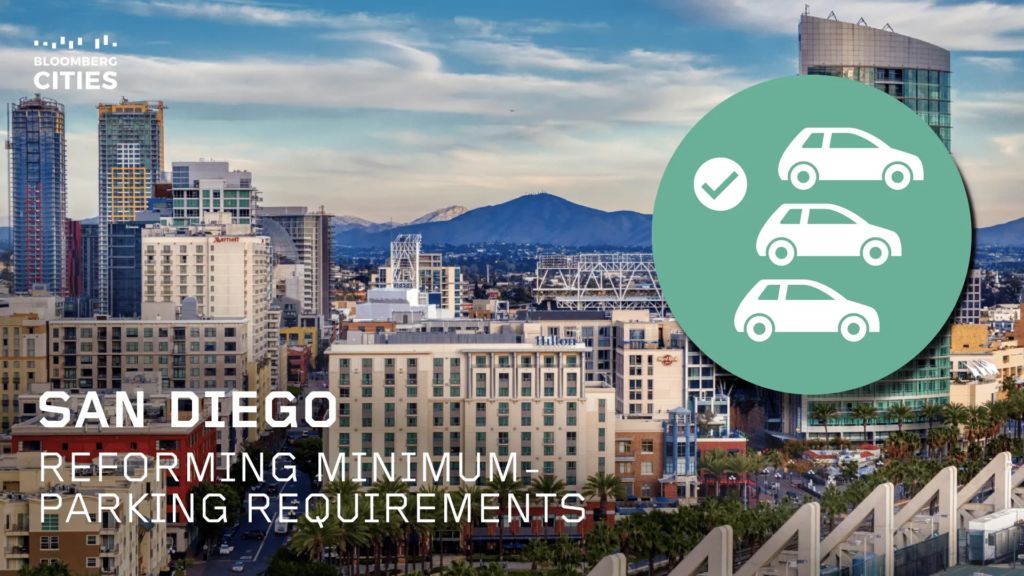
Minimum-parking requirements—zoning laws that stipulate that new buildings include a set number of off-street parking spaces—have helped keep the car king in American cities for more than a century. But these laws are linked to increased congestion and emissions and to higher building prices (up to $90,000 per building in San Diego) that trickle down to homeowners and renters and get in the way of affordable housing. That’s why San Diego has, for the past three years, made parking reform a key component of its climate action efforts, approaching the work on three fronts: First, the city eliminated parking requirements for buildings built close to public transit. Second, it adopted a “Mobility Choices” ordinance that encourages new developments to invest in safe and convenient transportation options, like biking, walking, and public transit. Third, the city reformed zoning laws in order to give businesses the flexibility to transform parking spaces into extended retail or outdoor dining space.
San Jose: Co-creating a building decarbonization strategy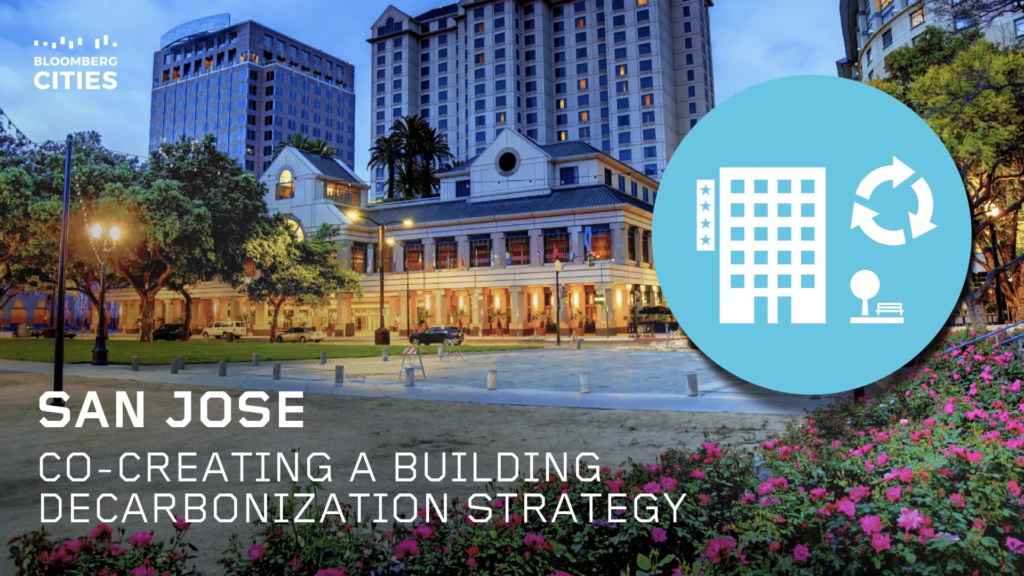
As San Jose aims for carbon neutrality by 2030, the city is paying particular focus to moving away from natural-gas use in existing buildings—which make up a full 34 percent of the city’s emissions—and especially to costs and cultural barriers that can stand in the way of residents upgrading their properties. “Full electrification might be an easy adjustment for some but an insurmountable cost for others,” explains Elena Olmedo, a Natural Resources Defense Council climate advisor working with the city. That’s why the city worked with groups representing San Jose’s longstanding working-class Latino and Vietnamese communities to co-create a decarbonization plan that addresses workforce training, financing, and tenant protections in order to lower building emissions. And while electrification was the plan’s initial intent, it’s also paving a way for new economic opportunities. “This is an exciting prospect for marginalized individuals to become the future workers in this growing sector,” explains Monique Melchor, director of the local workforce development group work2future.
St. Paul: Engaging residents to prototype EV car-sharing service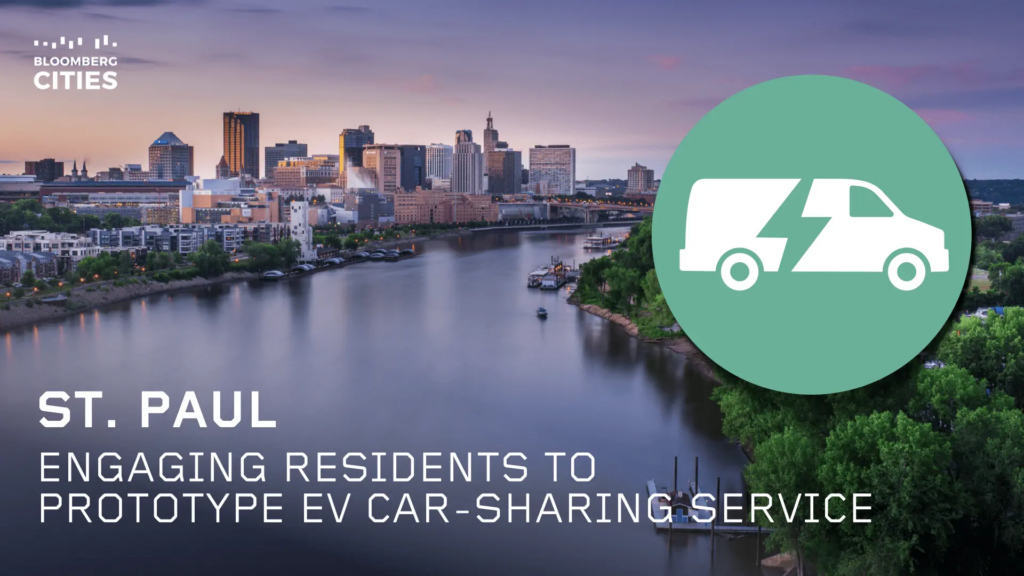
While the carshare industry has changed the ways many of us get around town, a lot of those changes have made commuting more expensive, made our streets more congested, and have added to our carbon footprint. Local leaders in St. Paul, Minn., saw an opportunity to reimagine carsharing as a way to not only boost residents’ mobility options but to do it in an equitable, climate-focused way. Over the past two years, the city, its partners, and residents prototyped what would become Evie Carshare, a new community-based electric carshare program that will eventually include 170 all-electric vehicles and 70 on-street charging hubs throughout the Twin Cities. Equity was a focus of every step of the development process, from setting pricing to deciding where charging hubs would be located, explains St. Paul Chief Resilience Officer Russ Stark. “We have a mandate from our community that our climate action really needs to have equity at the center of it to benefit our most under-resourced communities first.”



